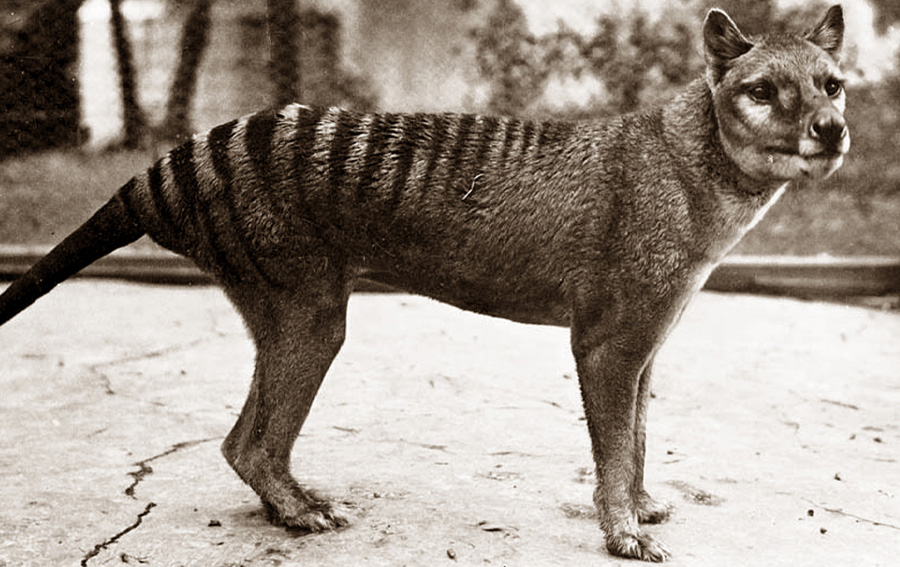Tasmanian Tiger Survived Into to 1980s or Later? - ATLANTIS RISING THE RESEARCH REPORT (original) (raw)

The so-called Tasmanian tiger (officially dubbed the ‘thylacine’) was not believed to have survived the twentieth century, when, as late as 1933, it could still be found in zoos. Along with the water opossum, the thylacine was one of only two marsupials with a pouch for both sexes. It resembled a dog with tiger-like stripes on its back side.
The elusive creature was reportedly filmed in Tasmania in 2015 by a trio of Australian hunters. The three held a press conference in late 2017 in Hobart, Tasmania to display their evidence, consisting of grainy images which seem, at best, rather inconclusive. Nevertheless, the event went viral on the internet. Their quest, say the hunters, will continue, and, as with bigfoot, doubtless, so to will the sightings.
A study, led by University of Tasmania professor Barry Brook, used a database of 1,237 observations from Tasmania, from 1910 onwards, to map the species’ decline and eventual extinction.
“We found that the Thylacine’s distribution shrank rapidly after a period when bounties were provided for animal skins across Tasmania (1888-1909), and that the most likely location of the last surviving subpopulation was in the south-western region,” Professor Brook said.
The team also estimated the most likely extinction date for the species, using uncertainty modeling and sensitivity analysis.
“The results showed that extinction likely occurred within four decades after the last capture, so around the 1940s to 1970s.”
“But we found, through further analysis, that extinction might have been as recent as the late 1980s to early 2000s, with a very small chance that it still persists in the remote south-western wilderness areas.”
This research was published in Science of the Total Environment (https://www.sciencedirect.com/science/article/pii/S0048969723014948.)

